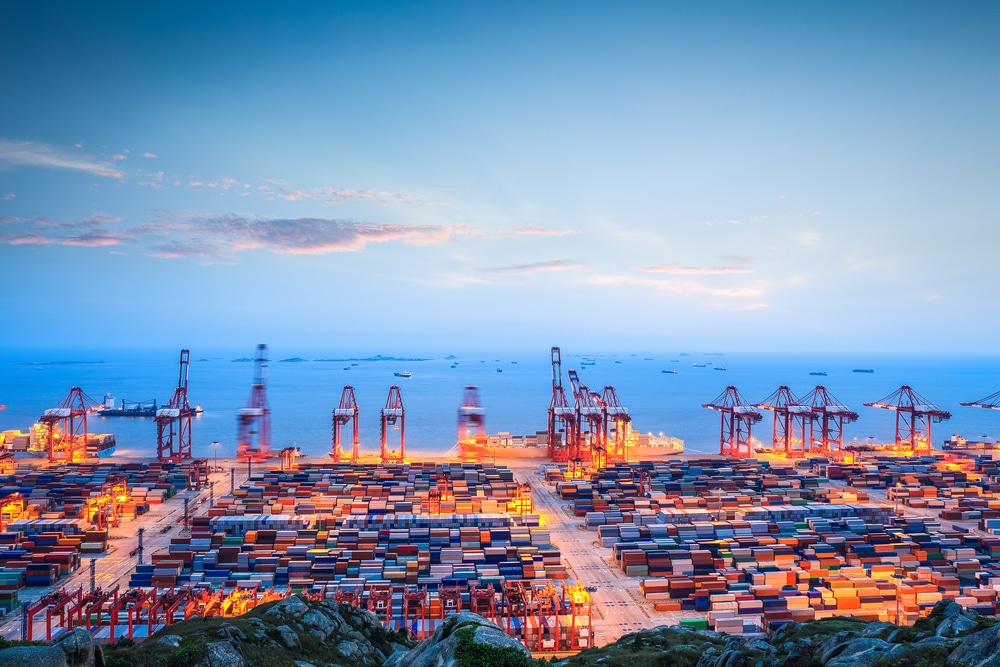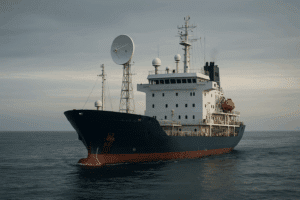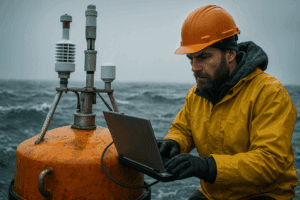With a growing emphasis on globalization and accelerating digital transformation in the sea shipping industry, the Port Community System (PCS) becomes key to building smart ports. It has been confirmed by the recent turn of events around the COVID19 Pandemic.
By connecting the various systems used by the actors that compose a complex network, PCS already in operation in the biggest ports around the world have proven their efficiency to support agile port businesses. But as the offer gets wider, it’s not easy to choose the best tool. Below is a list of the 10 major port community systems in the world.
What makes some PCS better than others?
Capacity to accomodate multiple third-party systems
The best Port Community Systems have the capacity to process a heavy load of data flows by integrating the maximum systems of the public and private stakeholders of the seaport communities. The list includes the shipping companies and their agencies, government regulatory agencies, customs administration and brokers, terminal operators, freight forwarders, hinterland carriers (road, railways, inland waterways), inland container depots, stevedores, surveyors, cargo owners, exporters.
Easy integration
Because a Port is an open system, and because all the stakeholders have their own system, a major PCS should be able to integrate their input into their own data flow. This integration should have a streamlined objective which is to facilitate the port operation. A major PCS has under its scope the interoperability of both tangible port actors (machinery, staff, cargo handling equipment…) and all the related operational processes.
Compliance with the IMO FAL Convention
Delays are always an important topic in Maritime Traffic. The International Maritime Organization (IMO) FAL Convention were adopted to prevent redundancy in that aspect. At the same time, governments cooperation and uniformization are a must to align all the stakeholders.
Security against cyber attacks
The increasing internet uses lead to a surge of cyber-attacks threats. Any reliable system has to integrate protections and remediation components in order to survive. Information shall be stored securely and compartmentalized per stakeholder.
Reliability
Redundant data entries and security issues due to interfaces between different actors’ inputs and accesses can lead to higher costs and time consumption. Some PCS are singled out because they eliminate redundancy and have better security, thus improve data acquisition and data accuracy.
Single Window View
Navigating through many panels while under restricted timeline can produce several errors. A single window view yet personalized matching the needs of the users facilitate the tool use. Checking of cargo status, ocean vessels schedule has to be considered empowering easy freight handling-fee calculation. Real-time decision-making is necessary to create the corresponding pick up and drop off operations timetables so as to optimize shipment movements.
Paperless
Having massive data being handled every day, the use of paper makes difficult even the easiest task. CPS uses automation to reduce time, costs and errors. Needless to say, storage costs increase every year which may have an impact on the company budget. Paperless system allows the staff to handle the business as usual tasks in a seamless way by accessing all needed information from a connected device. It reduces as well the risk inherent to paper: garbage spying, data losses, etc.
Accessibility
Modern cloud-based Port Community Systems enable access to all information in real time and from anywhere, on desktop and mobile devices. Data search and several logistics operations are simplified when using an integrated system instead of relying onto segregated documents into different forms. Accessibility allows easy controls from all stakeholders.
Subscription-based
At a cost reduction point of view, subscription-based is a key factor of decision-making. Accessing too many modules not conforming to the needs of the user can result into higher costs without any value added. Subscription-based solutions are more attractive both in terms of navigability and cost efficiency.
What are the 10 biggest port community systems?
Although there is a variety of port community systems on the market, some stand out by serving the largest ports in the world.
PCS1x in India
This cloud-based software, with user-friendly interface, has been launched by the Indian Ports Association (IPA). This solution is able to integrate with any customer system enabling real-time interaction between the parties.
It includes a payment aggregator tool, which offers an alternative to the bank’s payment ecosystem and therefore hastens transactions.
Portnet in Singapore
Portnet has largely contributed to making Singapore one of the World’s greatest logistics hubs. The system allows over 300 million transactions per year and helps the 10,000+ integrated customers to get real-time, detailed information and improve their operational processes. Over a three-year period, Portnet has enabled savings of over $80 million in the world.
Released by Portnet. com Pte Ltd., this solution offered by PSA Corp. is also planned for implementation in South Africa. Amidst strikes and negotiations with the local players and unions during Oct 2022, it is expected that the stakeholders will reach a mutual understanding.
LOGINK in China
The International Port Community Systems Association (IPCSA) has recently welcomed the Chinese system called LOGINK. It is a national public information platform destined for logistics and transportation.
A large system, its information-sharing network has extended to several ports with huge traffic to-and-from China like the Port of Abu Dhabi, Antwerp, Barcelona, Hamburg and Bremen. The system architecture is strong enough to support the heavy data load generated between all these ports.
Portbase in the Netherlands
All Dutch ports go smart, using state-of-the-art PCS developed by Portbase. With national coverage, Portbase provides more than 40 services to around 3,200 companies from the sea shipping sector. Safe and efficient data exchange is possible 24/7 on this open platform between the communities within the Netherlands and across the European Union. By optimizing their logistical processes, the latter gain yearly an added value of up to €245 million.
Soget in France
All ports in metropolitan France as well as French overseas departments and territories are equipped with SOGET PCS. The tool is recognized by local authorities, but also the International Association of Port and Harbors, the French Customs and the World Customs Organization among other large organizations and institutions across the globe.
The French system has chosen to focus on streamlined digital information aligned with security. The architecture of the platform relies on several single point of contact integrated with other systems like the Custom’s tool named GUN (Guichet Unique National de dédouanement).
MCP in the United Kingdom
Maritime Cargo Processing PLC remains the UK’s most important Port Community Systems Provider (CSP). MCP PLC’s Destin8 PCS is able to take on high data volume connected to the ports operations. The platform is aggregated into different modules related to the collecting of cargos, their storing and delivery between around 750 structures such as different government bodies and other several companies revolving around international and national transportation.
17 Ports in the United Kingdom are equipped with Destin8 together with around 50 inland custom clearance offices located inland. The information exchange between every public and private stakeholder in the industry are managed through an extensive EDI (Electronic Data Interchange).
On a global level, worldwide trade facilitation between the UK and other organizations such as the World Customs Organization and the International Association of Ports and Harbors are realized through MCP due to the system’s easier data consultancy. On a local level, the SITPRO organization is leveraging its capabilities to even ease the industry.
Port Optimizer™ in the United States
The United States ports are equipped with a system named Port Optimizer. This cloud-based platform allows all the actors in the transportation industry to work easily up to delivering goods to end customers.
For example, enhanced predictions for a serener planning have been implemented in the Port of Los Angeles using Port Optimizer. This process integrates all the chain players such as the cargo owners, shippers, terminal operators into a prediction-based decision-making. As a cloud-based system, paperless and accessible anywhere, it provides as well real-time data with historical inputs for truck movements for the twelve container terminals located in California.
To note that the integration of Port Optimizer with the rail-related companies IT GeoStamp and Wabtec Corporation provides 70% of the circulating data within the system. This combination has enabled port congestion reduction and, and at the level of U.S. port authority, a lighter shipping traffic management.
DP World Canada
DP World’s Port Community System has been named CARGOES PCS and is operating in Canada. The platform interface allows users to control their cargos throughout the overall process. It is also aligned with the customs requirements by presenting the shipments status from its temporary storage up to the finalization of custom clearance paperwork.
CARGOES PCS allows a centralized data sharing between cargo owners, shipping companies and the Canadian customs. It results in a facilitated control as the inventory of the cargo manifest released by vessels can be compared faster with the custom declaration.
APICS in Antwerp
Antwerp’s PCS is a customer first system by allowing its customer to order a service from the port though the interface. The combination of the PCS of Zeebrugge (Zedis) and Antwerp Port Community Information System (APICS) allows any request from the vessel’s side such as pilotage, up to moorings, towage services or even berthing request. Legally required notifications such as dangerous goods or waste type cargos are also made through these two systems, APICS having been developed to be accessed either through a smartphone or a computer.
Though the use of APICS and Zedis are mandatory, the access is free which reduces operating costs for its clients.
BHT in Germany
DBH provides IT services to the ports of Bremen, Bremerhaven and Wilhelmshaven in Germany. The system has a scalable and data-oriented structure and thus is connected to large number of systems in the industry regardless of the equipment used to access the platform.
Named Bremen Port Telematics (BHT), has a steady flow of information to service all the connected users. It is not necessary to transform third party data to comply with BHT requirements as the system prepares all input data before integrating the same. Users can choose their preferred data format which is delivered in due time by the system. As BHT is an integrated system, it optimizes time management of the industry users.
Standardization is the main challenge to further expansion of PCS
In order to take both main and secondary ports across the globe to the next level, PCS have to develop further. However, while countries implement various types of solutions, compatibility issues multiply. In this regard, large shipping lines recently called for standardization. The World Trade Organization (WTO)’s trade facilitation agreement, the United Nations, the International Port Community System Association and the World Customs Organization (WCO) have already taken the challenge up.
The discussions between these organizations aim at facilitating international imports and exports and at helping evolvement of ports business models. Their roles become particularly important as the demand for global ocean transportation grows. Knowing that 90% of world trade is carried by the international shipping industry, by 2050, maritime transportation volumes are set to increase by 200%.
Frequently Asked Questions About: Tracking a ShipPort Community System
A PCS refers to a Port Community System. It’s a National Single Window that links individual seaports and all supply chain actors.
A good PCS can present different caracteristics as:
- Capacity to accomodate multiple third-party systems
- An easy integration
- The compliance with the IMO FAL Convention
- A good security against cyber attacks
- Reliability
- Single window view
- Less use of paper
- Good accessibility
- A subscription-based
Port Community System are used by the largest ports in the word to simplify their communications, operations and optimize their efficiency.



